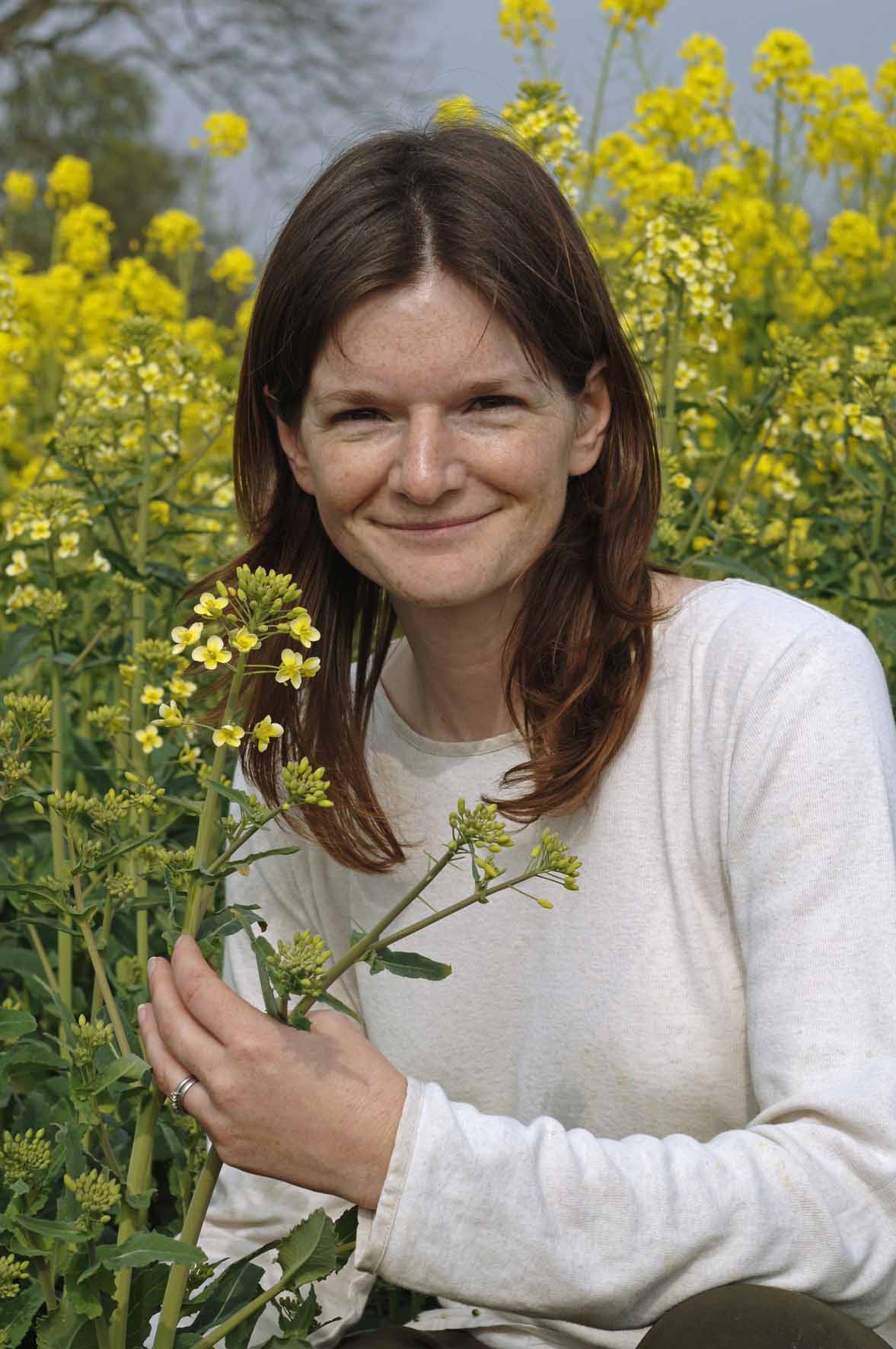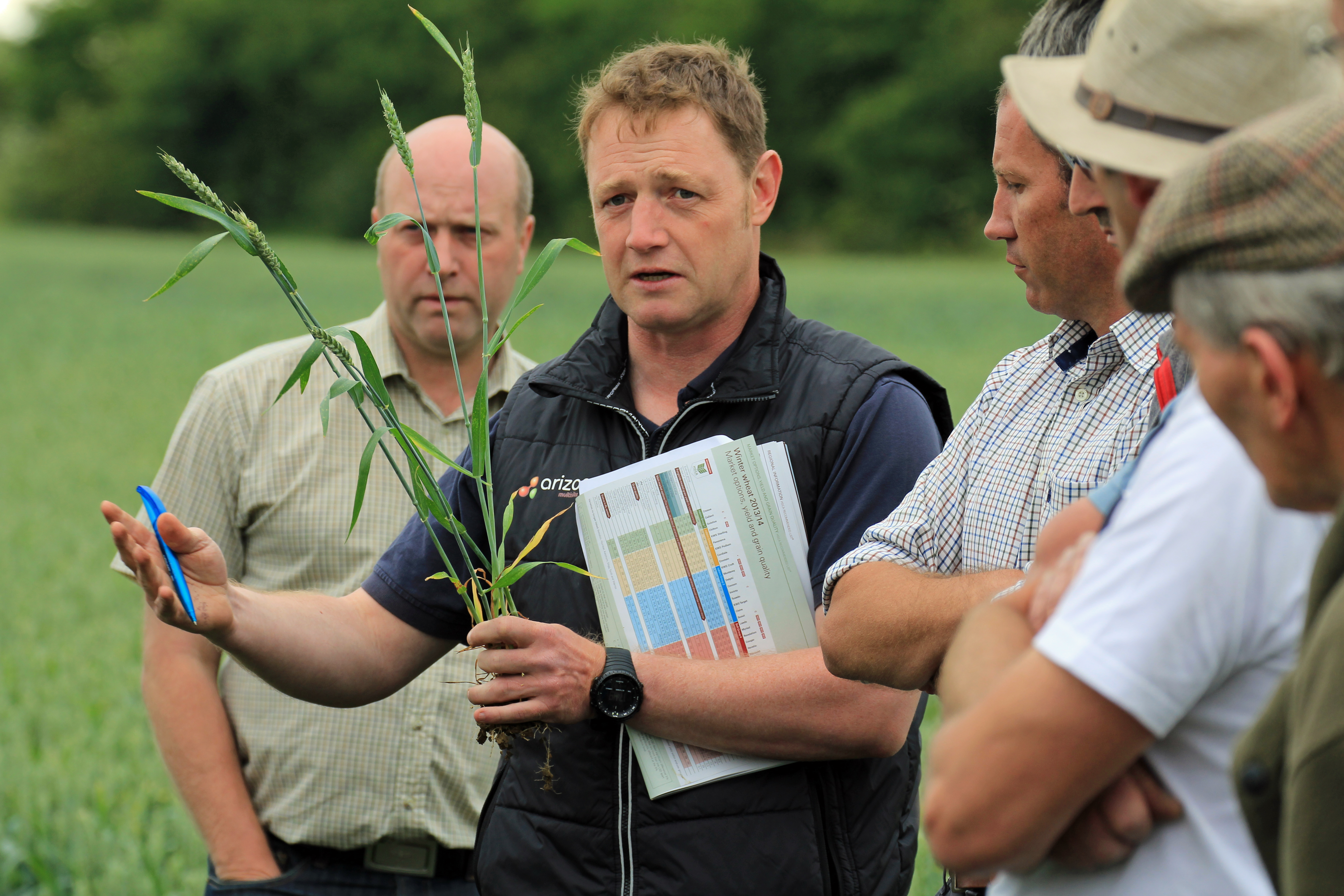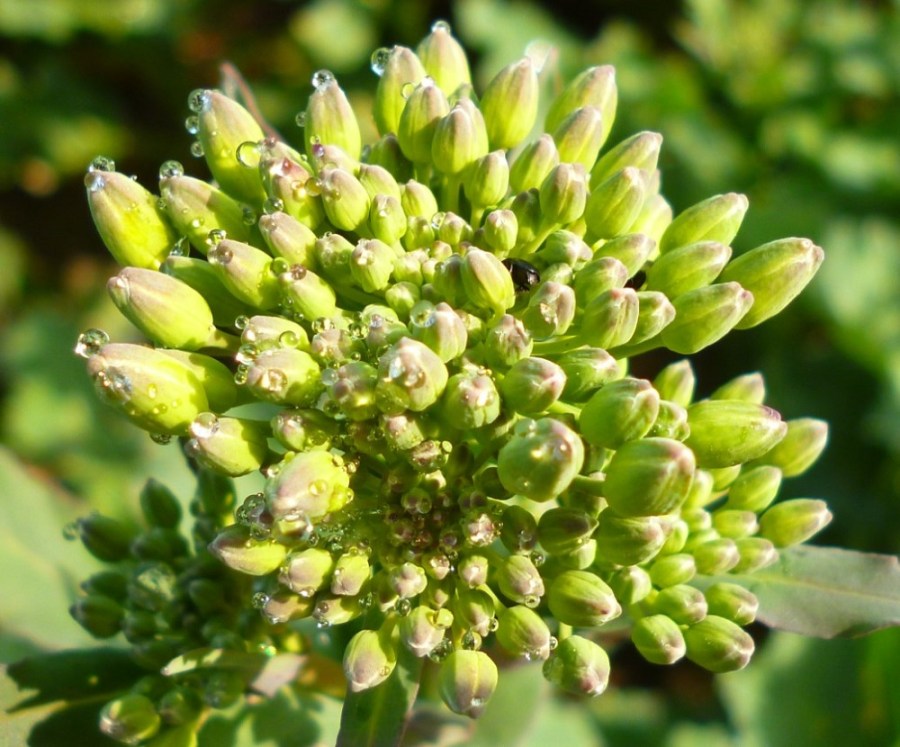Often the no-spray decisions are the hardest ones to make and rely on effective monitoring. CPM looks at how to streamline the process for pollen beetle by making use of an online tool.
By Lucy de la Pasture
It may be a cool start to spring but as soon as it warms up, the spring rush will be on. While the UK has not suffered from an epidemic of pollen beetle for several years, Sam Cook, senior research scientist at Rothamsted Research, says it‘s important to monitor for migration due to the wide variation in pollen beetle populations – not just across the country but even between neighbouring fields. The difficulty is in knowing just when to start looking for them.

Sam Cook explains trials at Rothamsted show earlier detection of threshold populations of pollen beetle by using the predictor tool to trigger monitoring.
“The Bayer pollen beetle predictor tool will show when the beetle starts migrating, which typically begins in early March – that’s when you need to be getting out into your fields and monitoring for them. But some seasons it can start earlier, so being able to see when the pollen beetle has begun flying in your area is really useful.”
She stresses that by doing this, growers can substantially reduce the number of sprays they collectively apply against pollen beetle. “We did some recent work comparing three treatment strategies: using the predictor to trigger going out to monitor in the field; monitoring each week, regardless of the predictor; and simply using prophylactic sprays with no monitoring involved.
Earlier detection
″We found that using the predictor tool resulted in threshold breaches being detected earlier and monitoring effort was also reduced. Monitoring, either using the predictor or scheduled weekly scouting, reduced sprays by over 50%.”
Chris Martin, technical manager at Agrovista, says that sprays have been used prophylactically less frequently in recent seasons, thanks to an improved understanding of the pest.
“In previous years, there was sometimes the attitude of if you see pollen beetle, you spray it. Now we know, depending on the timing of their migration, the growth stage of the crop, and the health of the crop, the pest won’t always cause enough damage to justify a spray.”
Pollen beetles overwinter in leaf litter as adults and come out of hibernation when temperatures start to rise above 12°C. They move onto local flowers such as daffodils and dandelions to feed, before migrating into the oilseed rape crop.
Buds are susceptible

Chris Martin advises that healthy OSR crops will compensate for any damage caused by pollen beetle if below the threshold to spray.
Sam says there can be problems when pollen beetle come into the crop at the bud stage – when it’s most susceptible to damage – before the buds have begun to flower.
“At this stage the beetle can’t access the pollen of the flowers, so they chew into the flower bud. This feeding damage causes the bud to drop off, so you never get the flower, losing a potential pod. Once the crop begins to flower, they don’t need to cause any damage to access the pollen, and from then on aren’t a threat.”
This means spraying strategies can change quickly, depending on conditions. An early, warm spring will be more likely to see problems, as the beetles come out of hibernation earlier and have longer before flowering to damage the crop.
Chris and Sam both agree the pollen beetle predictor tool is helpful as a trigger to keep an eye out for the pest in their fields. “Pollen beetle is such a localised issue, control depends very much on your own individual situation,″ says Chris. ″If you’ve had serious issues with it in the past, or you’ve encountered resistance in your region, then a product like Biscaya (thiacloprid) would be appropriate to use if the beetle population crosses threshold.
″But if the population hasn’t reached threshold and if you have a healthy OSR crop, it will have the compensatory ability to cope with any damage and you probably don’t need to spray at all. This is especially the case if the migration is fairly late and close to flowering.”
Potential to damage crops
Sam adds that even though the UK hasn‘t experienced a pollen beetle epidemic in the recent past, the potential threat it poses means it’s a pest that shouldn’t be forgotten.
“Germany suffered from a massive loss of pollen beetle control in 2006, which resulted in 40% of the crop being affected and the complete loss of 30,000ha.The onset of spring is different to the UK – in Germany it becomes hot more quickly and the pollen beetle comes out in a big rush. In the UK, the temperature rise is more gradual.
″But that does mean growers in the UK have to be vigilant for a longer period, of between 4-6 weeks. Any tools that can alleviate this pressure and improve monitoring efficiency are recommended.”
The Bayer pollen beetle predictor tool will be available to use here: https://cropscience.bayer.co.uk/tools-and-services/agronomy-online-tools-and-services/pollen-beetle-predictor/
Control thresholds for winter and spring OSR
- If there are less than 30 plants/m2 – the threshold is 25 pollen beetles/plant
- If there are 30–50 plants/m2 – the threshold is 18 pollen beetles/plant
- If there are 50–70 plants/m2 – the threshold is 11 pollen beetles/plant
- If there are more than 70 plants/m2 – the threshold is 7 pollen beetles/plant




